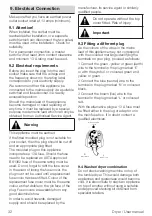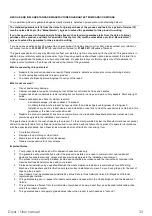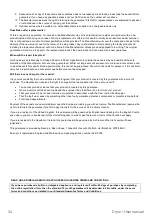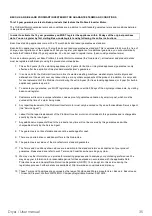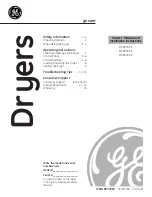
21
Dryer / User manual
* : Energy Label standard program EN 61121The values in the table are determined according to
the EN 61121 standard. Consumption values may vary from the valued in the chart depending on
laundry type, wringing speed, ambient conditions and voltage levels.
Hygienic Drying
It is the programme that you can dry your
washed products you want to provide with extra
hygiene (baby clothes, underwear, towels, etc.).
It provides high hygiene for your textiles via heat
effect.
5
800
185
125
Shirts
It dries the shirts in a more sensitive manner, and
causes less creasing and easier ironing.
1,5
1200
50
35
Sports
Use it to dry your clothes made of synthetics,
cotton or mixed fabrics or waterproof products
such as functional jacket, raincoat etc. Turn them
inside out prior to drying.
2
1000
135
105
Mix
Use this programme to dry non-pigmenting
synthetic and cotton laundry items together.
Sports and fitness clothes may be dried with this
program.
4
1000
120
85
5kg in 1 hour
Cotton and synthetic-containing clothings and
home textile products can be dried together in
this program. The recommended capacity for the
program is 5kg, and the program duration could
vary depending on the type and quantity of
textiles. It is not recommended to dry products
with very different sizes together.
5
1200
-
60
Energy consumption values
Programmes
Capacity (kg)
Spin speed in washing
machine (rpm)
Appr
oximate
amount of remaining humidity
Energy
consumption value kWh
RapiDry (kWh)
Cottons Eco *
8
1000
60%
1,44
2,30
Cottons Iron dry
8
1000
60%
1,10
1,85
Synthetics cupboard
dry
4
800
40%
0,55
0,95
"Cottons Eco programme" used at full and partial load is the standard drying programme
to which the information in the label and the fiche relates, that this programme is suitable for
drying normal wet Cottons laundry and that it is the most efficient programme in terms of
energy consumption for Cottons.
“If you regularly dry the 8 Kg maximum load of Cottons we suggest to connect the drain
hose to prevent the dryer stopping mid-cycle in order to empty the tank” (see Section
“Connection to the drain”)


























